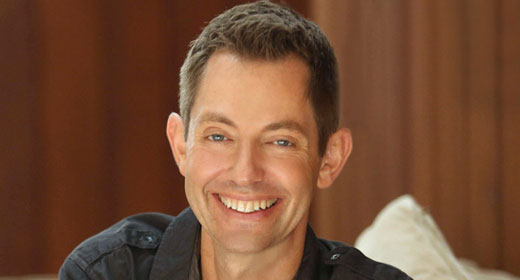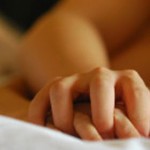by NNDB: H. P. Blavatsky, also known as Madame Blavatsky or HPB, is best known as the co-founder of Theosophy and as the author  of such esoteric classics as Isis Unveiled (1877), The Secret Doctrine(1888), Key to Theosophy (1889), as well as her highly praised work on Buddhism, The Voice of Silence (1889). In pulling together and systemizing a wealth of information on spiritualism and the occult, Blavatsky claimed to be guided by “The Brothers”, advanced spiritual teachers from a higher plane of being. Critics argued that she merely ripped off already existing works, ancient and modern, without giving any credit to the original authors. Blavatsky also claimed, at times, to also have highly developed psychic powers, but she was accused of fraud several times due to her tendency to bolster with trickery whatever gifts she did, or did not, possess. Nonetheless her teachings profoundly affected the thinking of such notables as Mahatma Gandhi, James Joyce, and William Butler Yeats. Furthermore the activities of her Theosophical Society did much to bring positive awareness of Eastern religions to Europe and other parts of the Western world. Blavatsky and other theosophists are also given special praise in India and Sri Lanka for their efforts to re-popularize both Hinduism and Buddhism within those nations.
of such esoteric classics as Isis Unveiled (1877), The Secret Doctrine(1888), Key to Theosophy (1889), as well as her highly praised work on Buddhism, The Voice of Silence (1889). In pulling together and systemizing a wealth of information on spiritualism and the occult, Blavatsky claimed to be guided by “The Brothers”, advanced spiritual teachers from a higher plane of being. Critics argued that she merely ripped off already existing works, ancient and modern, without giving any credit to the original authors. Blavatsky also claimed, at times, to also have highly developed psychic powers, but she was accused of fraud several times due to her tendency to bolster with trickery whatever gifts she did, or did not, possess. Nonetheless her teachings profoundly affected the thinking of such notables as Mahatma Gandhi, James Joyce, and William Butler Yeats. Furthermore the activities of her Theosophical Society did much to bring positive awareness of Eastern religions to Europe and other parts of the Western world. Blavatsky and other theosophists are also given special praise in India and Sri Lanka for their efforts to re-popularize both Hinduism and Buddhism within those nations.
H. P. Blavatsky was born Helena Petrovna Hahn on 12 August 1831 in Ekaterinoslav, Ukraine. Her father, Peter Alexeivich von Hahn, was a colonel in the Russian army, while her mother, Helena Andreyvna Fadeyev, was an accomplished novelist. Both parents were often preoccupied with their various career duties, so much of young Helena’s upbringing was left to servants. She became neurotic, demanding, and prone to fits of temper. From the servants she imbibed all manner of peasant superstitions, often claiming to see and command strange beings. When given offense she often threatened to bring the wrath of supernatural beings down upon whoever opposed her. Her threats and fury once so terrified a fourteen-year-old peasant boy that he fell into a river and drowned. Favorite pastimes included lulling pigeons into a hypnotic stupor by stroking them; such was the charismatic quality of her tremendous imagination that other children often became entirely caught up in her stories, claiming to see before them the very things that she described. In addition she had a tendency to wander and talk in her sleep. Not surprisingly, the servants became convinced that possessed supernatural powers, and before long young Helena agreed with them.
When she was eleven years old her mother died, though Helena would later claim her mother had died many years earlier than that. With her mother gone and her father caught up with military campaigns, Helena and her brother were sent off to live with their maternal grandmother. At age seventeen, willful, temperamental, and undaunted by adventure, Helena rebelled against familial expectations and criticisms by marrying a middle-aged General, Nikifor Vassilievitch Blavatsky. Three months later, with the marriage still supposedly unconsummated, she gave the general’s bodyguards the slip and ran off. To escape the wrath of her family she fled to Constantinople.
Thus she began a series of incredible adventures that involved perilous travels to India and Tibet, where she was supposedly able to disguise herself and sneak into secret lamaistic rites and to study with an “ascended master” or two. According to her own tales, she was also a circus performer, a concert pianist, an opera singer’s mistress, and a soldier in Garibaldi‘s army, during which adventure she was wounded and left for dead at the battle at Mentana. According to Blavatsky, she was “picked out of a ditch for dead with the left arm broken in two places, musket balls embedded in right shoulder and leg, and a stiletto wound in the heart”. She also had a string of failed businesses, sailed to Egypt and was one of the few to escape drowning when the ship went down, and became involved with a mysterious Egyptian brotherhood. At one point she worked as a fortuneteller in Cairo with another woman as a medium, but was put out of business amidst charges of fraud.
She returned to Russia for a period around 1858, impressing some with her table turning, as well as other, reportedly more authentic, feats of psychic prowess. She became embroiled in various love triangles and affairs, and somewhere along the way she may have birthed a son, but her conflicting stories make it unclear whether the boy was her own by an affair, or merely adopted from another couple. In any event the boy, named Yuri, born around 1861, was deformed, possibly with a hunchback, and died at around age five. Helena claimed to have loved him more than anyone in the world and to have been sufficiently devastated by his death as to lose all belief in God.
She arrived in New York in July of 1873. She moved into a crowded tenement house where she eked by on money sent from relatives and gleaned from various schemes, including seamstressing. She later moved in with some journalist friends, who found that photos that they left out at night were found the next morning miraculously tinted by “the spirits” with watercolors. The wonder and awe disappeared when Helena was observed sneaking about in the night with paintbrushes and paint. She next tried her hand at a farming venture with a couple she knew from Russia, but this failed and she was subsequently cheated out of her share when the farm sold at auction.
In October of 1874 she read an article by New York journalist and lawyer Henry Steele Olcott concerning his investigations into the paranormal, specifically some séances and other mediumist phenomena at the Eddy Brothers’ farm in Chittenden, Vermont. Helena made a pilgrimage to the farm where she finessed her way into an audience with Olcott by claiming association with the brothers. Though Olcott saw through her story, he agreed to observe Helena in action and eventually became quite impressed by her apparent abilities.
Eventually the two teamed up and decided to found a society for the further study of spiritualism — mediumship, arcane spiritual knowledge, and the like. Their first attempt, The Miracle Club, foundered when some of the spiritual performers involved began demanding payment. Their next attempt was more successful, drawing a broader range of spiritual mysteries, including occultism from ancient Egypt. A consultation with the dictionary, in the late fall of 1875, helped the group settle on a name: the Theosophical Society. Olcott, Blavatsky, and some of the other Theosophists had meanwhile moved in together in a large flat, calling it a Lamasery or Lamastery. Helena turned her attention from journalism toward a longer, more substantial project, and in 1877 published her first book of ruminations on the occult, Isis Unveiled. According to Blavatsky, the work was channeled from the (otherworld) spiritual masters who were her guides. She would later claim that these same guides had orchestrated all of the significant actions that led to and developed her work with the Theosophical Society.
Yet criticisms of fraud and plagiarism continued to hound Blavatsky. For example, William Emmette Coleman, writing in the early 1890s, claimed to have uncovered some 100 works from which Blavatsky had clearly stolen material while crediting it to her spiritual teachers on the “other side”. Furthermore Coleman asserted he could prove that while Blavatsky had claimed to have read many old and rare great books in the original, she had clearly lifted quotes from secondary materials about those same books. Later Theosophists, in defending Blavatsky, dismissed Coleman as a Victorian crank.
In April 1875 Blavatsky married a second time, to Michael C. Betanelly. This was apparently another unconsummated marriage of convenience, with Betanelly insisting on providing for Blavatsky. This arrangement lasted but a few months, and their divorce was finalized 25 May 1878. A few months later Blavatsky was granted U.S. citizenship, at which point she, along with Olcott and two other Theosophists, set out for India to immerse themselves in Buddhism. So successful was their foray that in 1882 the Theosophical Society relocated its headquarters to Adyar, near Madras, India. In addition to deepening their knowledge of Buddhism, and fostering its re-emerging popularity among local peoples, the Theosophists became involved in various schools and assorted promotions of Theosophy, including faith healing and mediumistic displays — some of which entailed letters of wisdom and advice penned by “the brothers” (Blavatsky’s spiritual guides), letters which materialized apparently out of thin air.
As expected, scandal soon attached itself to Blavatsky’s paranormal activities. In 1884, one Dr. Hodgson was sent by the Society for Psychical Research to investigate allegations that Blavatsky’s psychic and spiritualistic feats were fraud. Hodgson not only procured confessions by individuals who claimed to have helped Blavatsky contrive her “supernatural” theatrics, but he also claimed to have found an assortment of physical evidence as well — sliding panels, a dummy head and shoulders, and slim spring-loaded openings in the ceiling. (Theosophist recent reviews of Hodgson’s report claim extreme bias and incorrect handwriting analysis of the letters in question.) Olcott, whose reputation was unscathed by the report, ordered Blavatsky to withdraw from Adyar. Other Society members, most notably Annie Besant and A. P. Sinnet, attempted damage control, but the scandal was slow to fade.
Blavatsky retreated to Germany to work on her magnum opus, The Secret Doctrine. More extensive than her earlier work, it was finally published in 1888. She then moved to London where she founded the magazine Lucifer (Light Bringer), which would have a marked influence in some artistic and intellectual circles. In 1889 she issued The Key to Theosophy and The Voice of Silence. Yet her health was in decline; she struggled with Bright’s Disease, heart disease, and rheumatism. On 8 May 1891, she succumbed to influenza.
Despite her passing, the Theosophical Society persevered. After Olcott’s death in 1907, it turned its focus from Buddhism to Hinduism, under the leadership of Annie Besant and C. W. Leadbetter. 100 years later, the Society is still going strong, although it now distances itself from psychic phenomena. Blavatsky’s writings have continued to be immensely popular, and whether their contents represent channeled wisdom and original thought, or a cleverly systemized amalgam of other people’s contributions, they have had a profound influence on religion, literature, and even politics.
As already mentioned, Blavatsky’s work, and that of the Theosophical Society in general, was responsible for introducing the West to the spiritual teachings of the East, especially Hinduism and Buddhism. It further introduced the idea of the Brotherhood of Man, and the notion of a great Wisdom Tradition existing beyond any particular religion. According to Blavatsky and the Theosophists, this Wisdom Tradition was simply the great Truth, existent on some higher plane, manifest to varying degrees in the world’s many religions, however distorted by human bias. Thus although no religion was a perfect embodiment of this Truth, all religions were an attempt to reach toward it. It was bringing it forth in a new and more pristine form that Blavatsky saw as the central task of the Theosophical Society.
Whether Theosophy represented some higher wisdom or not, the fact remains that many of the ideas popularized in Blavatsky’s work, and those of fellow Theosophists, have become standard fare within the modern “New Age” spiritual movement, and many concepts, such as reincarnation, ascended masters, higher planes, communication with spirits, and the lost continent of Atlantis have filtered into mainstream and pop culture — much to the chagrin of fundamentalist Christians.
In the literary world meanwhile, both William Butler Yeats and James Joyce both acknowledged the profound influence which Blavatsky’s spiritual teachings had upon them. Joyce even stated “it is impossible to grasp the meaning of Ulysses, its symbolism and the significance of its leitmotifs, without an understanding of the esoteric theories which underlie the work”. Many other artists and writers trace an influence from Theosophy and specifically Blavatsky. Untold numbers have read the works of such artists, listened to their music or viewed their painting or sculpture, without any realization of the underlying philosophical lineage, and many of these have gone on to create their own works, ignorantly perpetuating Theosophist themes and values.
Similarly, many of admired the work of Mahatma Gandhi without realizing that he had been introduced to Blavatsky in 1890, while he was studying law at University College London. Gandhi himself states that it was the works of Madame Blavatsky, especially Key to Theosophy, that convinced him there was something of value within the spiritual teachings of his homeland — teachings which later gave shape, form, and moral authority to his challenge to British rule in India. This, coupled with the boost given by Theosophists to their indigenous religious beliefs, has endeared Blavatsky to many in India, who praise her for exhibiting such broadmindedness and generosity of spirit in the face of bigoted colonialism and encroaching Christianity.
All in all, if Helene Blavatsky truly could have glimpsed the future (or looked down on us from the beyond), she would likely be chagrined at the beating her name has taken over the decades, and perhaps amused equally at those who dismiss her and those would would attribute her with undue spiritual authority (as some sort of savant, without human foibles and shortcomings). But she would surely be deeply gratified to observe the influence of her work and her writings, and the webs of affect that have spread out from her early endeavors. Ironically, so much of her influence, so much of her hand in setting things in motion, has been entirely forgotten, and very few today still recognize the name of Madame Blavatsky.








































